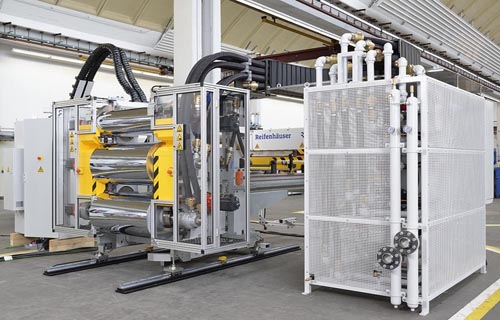Polyethylene (PE) buyers in Europe have been unable to obtain lower prices from producers in November as a result of smaller-than-expected amounts of imported material amid lacklustre demand and a flat market, sources said on Friday.

“If I can get €30/tonne ($41/tonne) [less] in December I will consider that a real achievement,” said one buyer of high density polyethylene (HDPE). “We’re not even buying that much, but [producers] won’t budge.”
PE buyers had faced price increases of around €30/tonne in November, an amount that would cover the €28/tonne increase in the monthly ethylene contract price, which now stood at €978/tonne FD (free delivered) NWE (northwest Europe).
Buyers of low density polyethylene (LDPE) were under even more pressure, as producers aim to raise prices next month.
On 18 November, Dow Chemical announced a €70/tonne increase for December PE. The US-based chemical major was making it clear that it was looking to cover what it saw as its increased costs in PE.
Dow Chemical’s move was met with hilarity by some and anger by others. A couple of sources noted that Dow’s price increase has changed the debate over the direction of PE pricing in December.
“If Dow announces plus €70/tonne, that means others will roll over,” said one buyer, “but it also means that we might not be able to get lower prices.”
Producers of LDPE and linear low density polyethylene (LLDPE) reported strong demand this month, and Dow said that it had already closed its order books for November.
Several sources questioned the premise that demand was good, instead putting higher prices down to restricted availability rather than particularly healthy demand.
Several permanent capacity closures in the LDPE market, coupled with the less-than-stellar performance of new plants in Europe and the Middle East and the strikes last month in France, meant that LDPE availability was tight.
“I see LDPE as structurally tight now,” said another producer, “and I can’t see it getting any better in the future.”
Another producer said that LDPE should no longer be considered a commodity; it should command a premium over its traditional blending partner, linear low density PE (LLDPE).
The price gap between the two grades had soared to as much as €200/tonne in some cases, although this was not typical of contracts between producers and their buyers. The traditional €50/tonne delta was no longer valid, however.
LDPE net prices were moving as high as €1,300/tonne FD NWE at some accounts. LLDPE C4 was trading around €1,100/tonne FD NWE. Monthly contractual business did not show such extremes.
With rises in crude oil and naphtha prices, PE producers aimed to grab back the margins they had lost. A recent dip in crude oil prices from the recent $90/bbl high had led some buyers to expect some relief in December.
“I was predicting a rollover in December after recent falls in the oil price,” said another buyer.
Crude oil was trading at $85.96/bbl on Friday morning.
Countering reports that demand was shoddy, one major LLDPE producer reported November as its best sales month ever.
Whether or not higher prices are implemented in December, PE prices are unlikely to move down to any great extent next month.
Inventories were low, even if demand tailed off significantly. Producers and traders were under no pressure to sell and they saw no reason to offer discounts.
“Ethylene is getting tighter and we could see a big jump in the December contract,” said the LLDPE producer. “We won’t give away any more margin.”
Buyers said they had been disappointed with the amount of material coming out of the Middle East. At the beginning of 2010, even producers admitted that they had expected prices to fall during the second half of the year.
For 2011, buyers were more cautious in their outlooks.
“We are discussing volumes for 2011 now,” said the producer. “Buyers don’t trust the Middle East any more. They are worried they won’t get the volumes they need next year and they can’t rely on spot [volumes] being available.
Source : www.icis.com








